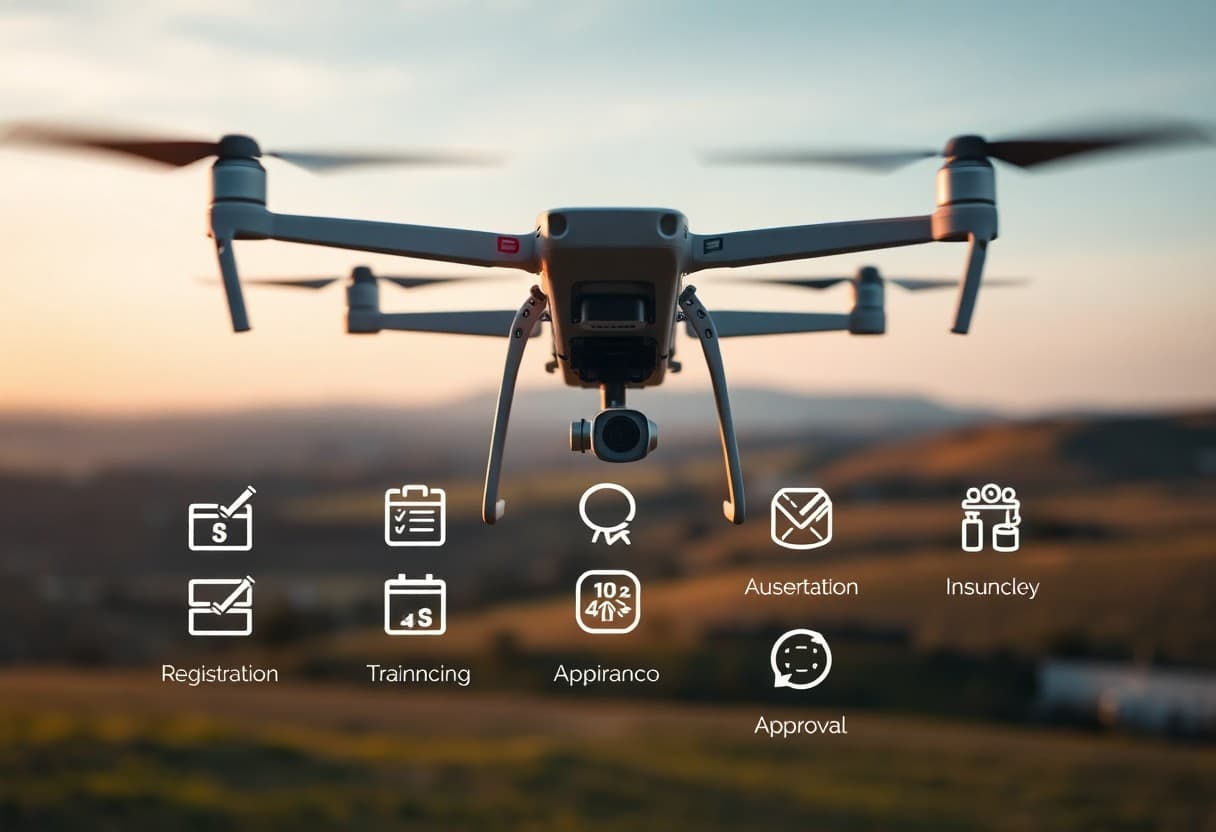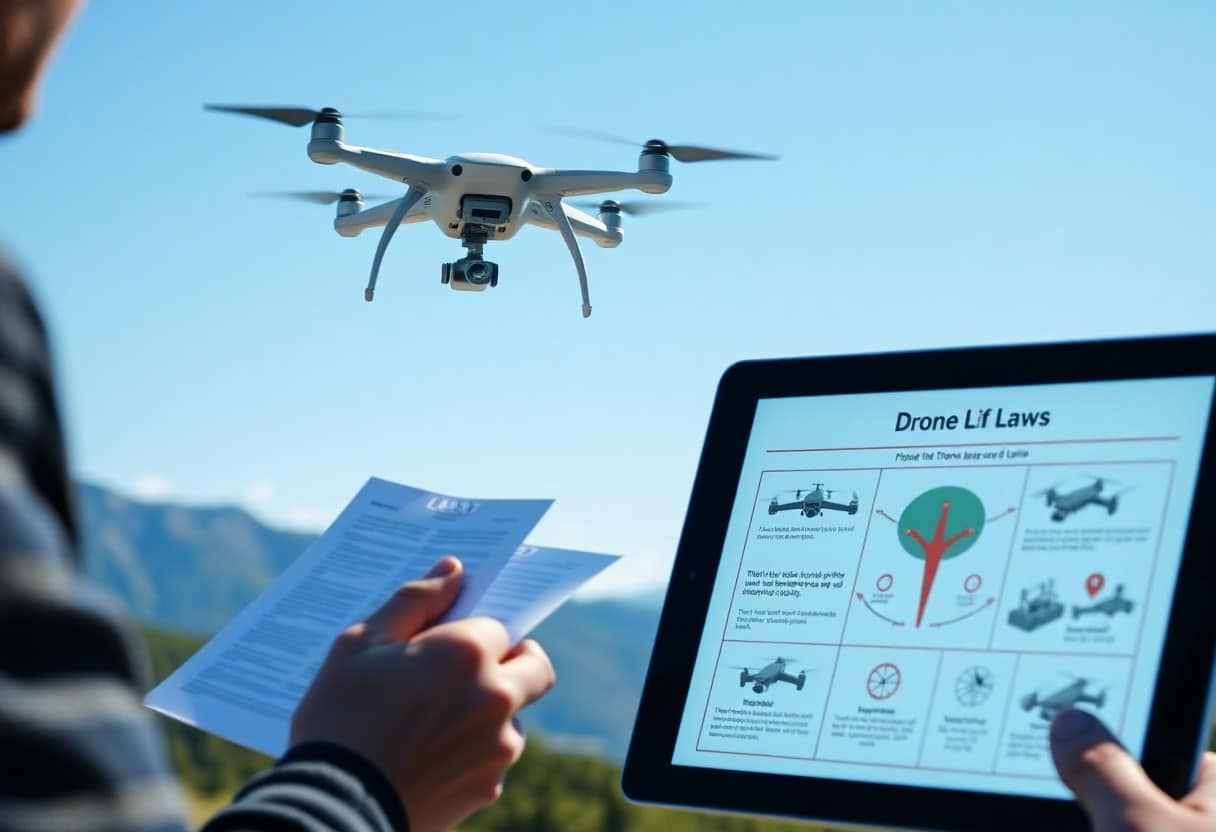Basic Steps to Fly a Drone - From Novice to Professional
If you want to learn how to fly a drone, this article will provide you with theNecessary Stepsto help you get the most out of yourNovice to ProfessionalThe first thing to do is to understand your drone and its rules of operation. First of all, it's important to know your drone and its operating rules, not only to improve your operating skills, but also to avoid any problems during flight.DangerousYou will be able to explore more advanced drone photography techniques and have a lot of fun with it. With the accumulation of experience, you will be able to explore the more advanced techniques of drone photography and get endless fun from it. Are you ready? Start flying your drone!
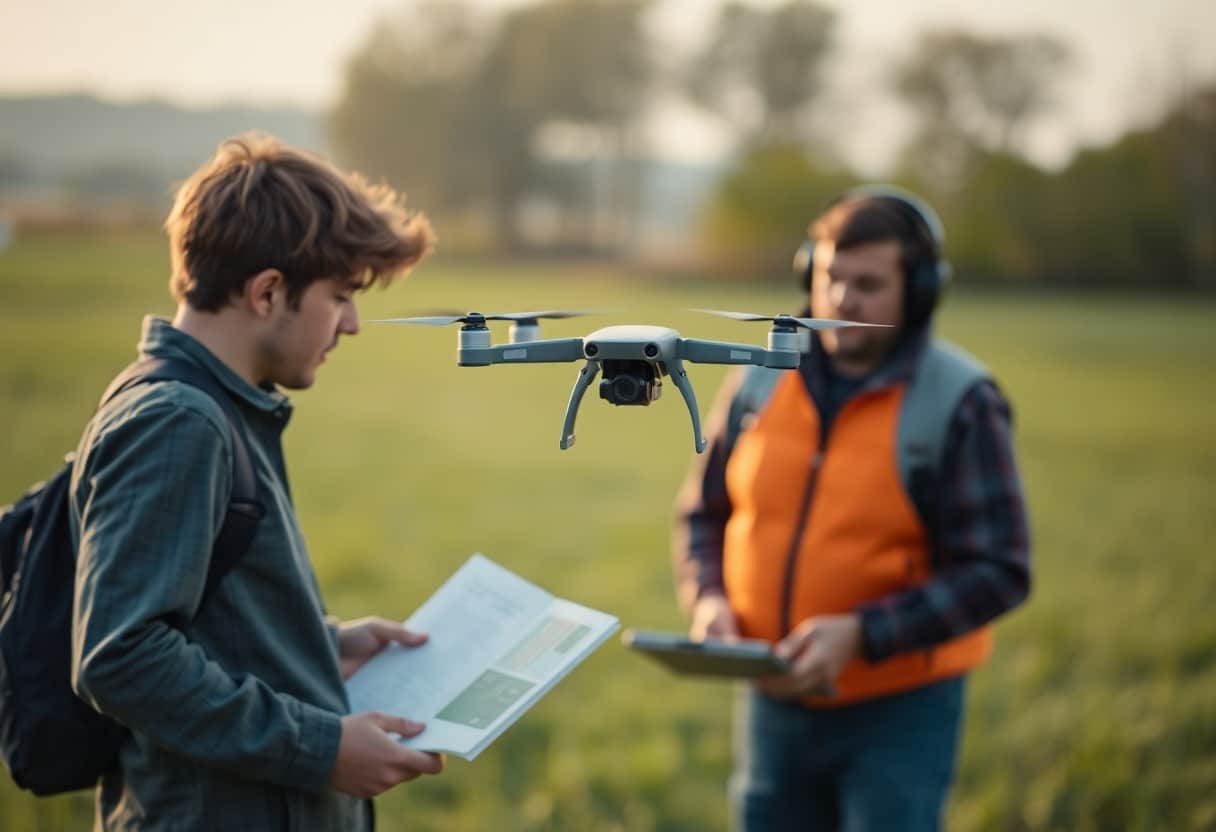
The main point:
- Understand the specification:Familiarize yourself with local drone laws and regulations before flying.
- Choose the right drone:Choose the right drone model for your needs and skill level.
- Base operation:Learn basic drone control skills, including takeoff, landing, and navigation.
- Pre-flight inspection:Check the status of the drone before each flight, including batteries, propellers and sensors.
- Simulation training:Practice with drone simulators to improve operating skills.
- Maintain a highland vision:Make sure the drone is always visible to avoid accidental collisions.
- Keep learning:Continuously update your knowledge and skills as technology advances.
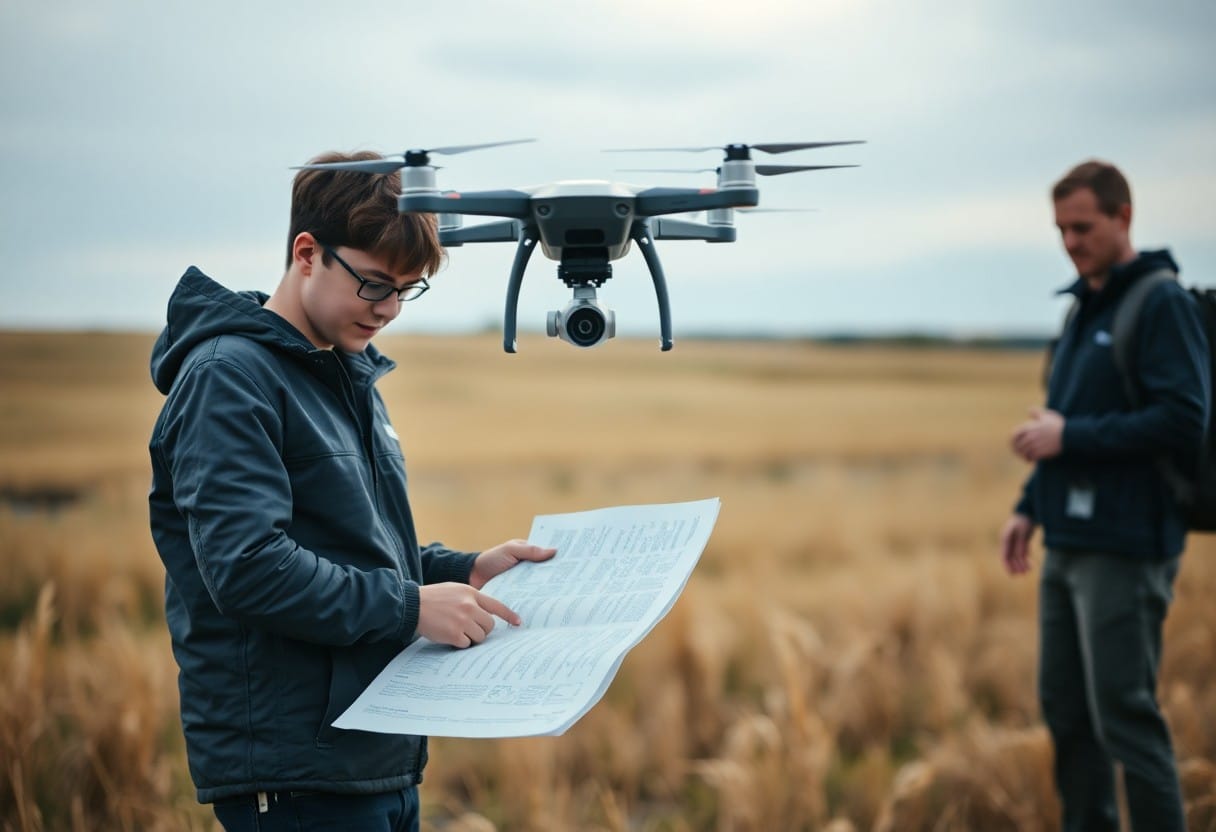
Understanding Drone Types
Before you start flying a drone, you need to understand the differentDrone TypeThe most common type of drone is a drone that can be used for a variety of purposes. Drones are usually categorized into several types. Depending on their purpose, technology and design, users can choose the drone that best suits their needs. The following are some of the main types:
| Drone Type | distinctiveness |
|---|---|
| Consumer Drones | Suitable for beginners, easy to use |
| Professional Drone | High performance, suitable for commercial use |
| Racing Drones | Fast, often used in tournaments |
| Photography Drones | High resolution camera function |
| Agricultural Drones | Specialized in agricultural monitoring and sprinkler irrigation. |
Your choice of consumer drone will not only affect your learning curve, but also your driving experience and enjoyment. These drones are usually designed to be simple and user-friendly, making them suitable for newcomers to drones. Choosing a commercially availableConsumer DronesThe newest addition to the program is the "Flyer", which allows you to get started quickly and enjoy the thrill of flying.
Professional Drone
Professional drones are usually more powerful and have more features. These drones are ideal for taking high-definition images or performing specialized tasks such as mapping and agricultural surveillance. You'll find that these drones are equipped with high-qualityCamera InstallationWith the advanced navigation system, it can fly stably in all kinds of environments.
Professional Drone Details
Professional drones are widely used in various industries because of their excellent performance, especially inArchitecture, Agriculture and Film ProductionThe potential of these drones is enormous. These drones are usually equipped with high-resolution cameras and other important equipment, such as thermal imaging cameras or LIDAR systems. When using professional drones, it is important to pay particular attention tosuretyThe reason is that they are more technically demanding and may involveLaws and RegulationsCompliance. With the ability to increase productivity and deliver professional image quality through proper use, the Thou is well worth the investment in a high-performance flying machine.
Necessary equipment and accessories
To be a good drone operator, it is important to have the correctEquipment and accessoriesIt's important. Choosing the right drone can have a direct impact on your learning process and flying experience. For more information on how to fly a drone, you can refer toSimplifying Drone Laws - 8 Steps to Legal and Responsible Drone UseThe
Choosing the right drone
When choosing a drone, you should consideruse,Budgetrespond in singingTechnical RequirementsThe first time you play with a model, it is usually easy to control and relatively inexpensive. Beginners can usually choose models that are easy to control and relatively inexpensive, which will help you get started quickly and develop your skills.
Performance-enhancing accessories
To improve the performance of your drone, you may want to consider purchasing a fewAdditional accessoriesThe newest addition to the lineup is a new battery that will help you fly longer and more stable. For example, the use of high-quality batteries can extend flight time, while upgraded propellers help improve handling and flight stability.
In addition, choosing the right accessories will not only enhance the performance of your drone, but also thesafety. For example, the use of replaceable batteries and professional maintenance tools can prevent accidents caused by low battery levels, while HD camera equipment can provide you with better image capture. Ensuring that you have these essential accessories is key to ensuring safe and quality flights.
Pre-flight Preparation
Before you start flying a drone, it is important to conduct adequatePre-flight PreparationThis involves not only checking the condition of the equipment, but also understanding the relevant aspects. This includes not only checking the condition of the equipment, but also understanding the relevantLaws and RegulationsThe following are some examples of how to do this. For a detailed guide, you can refer toTransform Your Ideas - Steps to Effectively Use CAD Tools for Amazing DesignsThis will help you prepare mentally to fly safely. This will help you prepare mentally to fly safely.
Understanding local regulations
Before flying the drone, you mustUnderstanding local regulations. Different regions may have different drone regulations, including height restrictions, no-fly zones, and registration requirements. Make sure you are familiar with these regulations to avoid fines or other legal issues.
Execute pre-flight checklist
proceedPre-flight ChecklistThe checklist should cover all important functions of the equipment, including battery power and communication links. The checklist should cover all the important functions of the equipment, including battery power, propeller status and communication links. Ensuring that all of the drone's systems are functioning properly reduces the risk of accidents during flight.
When performing a pre-flight checklist, you should check each item carefully. For example, check the drone'sBattery PowerAdequacy, tightness of the propeller, camera in the correct position, and all theCommunication Equipmentwhether it is functioning properly. These steps are effective in reducingChance of AccidentWe are committed to improving your flying experience. Be sure to conduct a meticulous inspection before each flight to ensure your safety and the proper functioning of your drone.
Basic Flying Techniques
Mastering basic flying skills is essential for anyone who wants to become a professional drone controller. These skills will not only help you fly your drone better, but will also ensure that you stay safe while flying. In this chapter, you will learn how to control your drone and the basic flight maneuvers that will improve your smoothness and accuracy.
Learning Controller
First and foremost, understanding your drone's controller is the foundation for successful flight. You'll need to familiarize yourself with the function of each button and lever. Typically, the left lever on a controller is used for elevation, while the right lever controls direction. Mastering these basic operations will allow you to fly your drone with more confidence, otherwise it could lead to aaccidentThe
Mastering Basic Movements
Once you have mastered the controller, the next step is to learn the basic flight maneuvers, including forward, backward, left and right turns. When practicing these maneuvers, pay special attention to the stability and altitude control of the drone. Whether you're flying indoors or outdoors, these basic maneuvers will help you maneuver in different environments and minimize the amount of time you have to spend flying.Collision and DamageThe risk of
In the process of mastering the basic maneuvers, it is recommended that you choose an open area with no obstacles to practice. Start with simple forward and backward maneuvers, and gradually try turning and hovering. This gradual practice will help you to be sensitive to the way the drone moves and reacts to the environment. When you are able to perform these maneuvers comfortably, you will have a solid foundation for more advanced flying skills, which will allow you to fly more skillfully in the future.flexibleThe
Advanced Flying Skills
Having advanced flying skills will allow you to realize the full potential of your drone, making your flying experience more refined and professional. Learning how to operate a drone in different environments and mastering complex flight techniques are key to improving your skills.
- Precise control of flight altitude and angle
- Learn to use GPS-assisted navigation
- Operate the drone's special effects features
- Mastering Emergency Response Skills
- Conduct long flight tests
If you want more tips, check out this articleHow does using RAW format in drone photography benefit post-production?
| Project | descriptive |
|---|---|
| Precision Driving | Improve control of drones. |
| special effects function | Use drone effects to enhance the quality of filming. |
Aerial photography and videography
With the advancement of technology, the use of drones in aerial photography and videography is becoming more and more important. You can capture beautiful scenery and touching moments through high-quality lenses and stable flight, which will further enhance your work.
Flying in different conditions
Flying in various climatic and environmental conditions is one of the challenges for drone pilots. You need to learn how to cope withWind Speed, Rainfallrespond in singinglow visibilityand other issues to ensure the safe operation of the drone.
existDifferent flight conditionsIt is important to maintain the stability of your drone. You need to observe the weather and adjust your flight plan accordingly. When there is aGale force winds or rainIf you do, you should immediately consider whether to abort the flight in order to avoid uncontrollable situations. And in the case oflow visibilityYou will be able to check the drone's transmission signals and battery status to ensure the safety and effectiveness of your flight in the environment. These tips will help you become a good drone pilot.
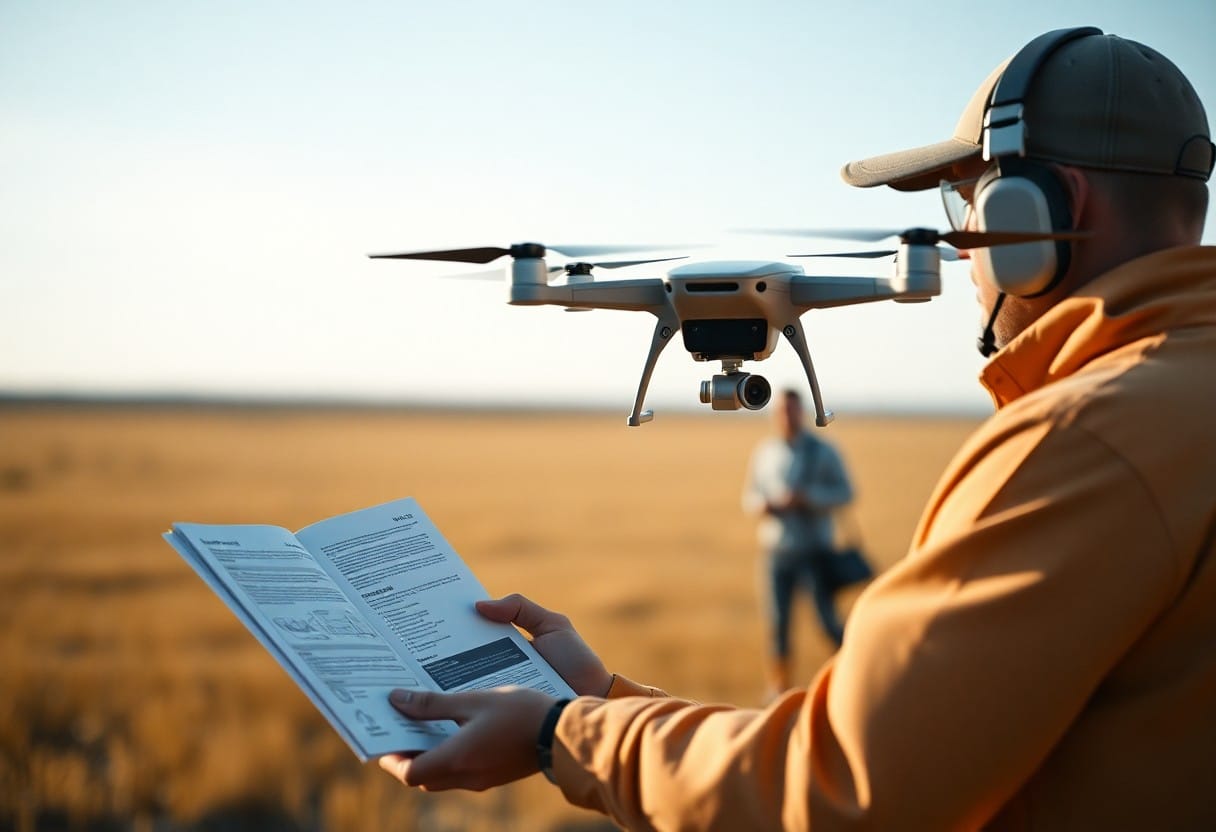
Troubleshooting Common Problems
While operating a drone, you may encounter various problems that may affect the safety and smoothness of your flight. Therefore, learning how to troubleshoot these common problems is essential to safeguarding your flying experience.
Solving Software Problems
If you find that your drone's apps are not working properly or the connection is unstable, first make sure that your device has been updated to the latest version. If the problem persists, restarting the app or device is usually effective in resolving the issue.
Troubleshooting Hardware
Hardware failures are common problems with drones, such as battery failure or damaged paddles. These problems can lead to unstable flight and may even jeopardize your safety and the safety of others. Therefore, regularly checking and maintaining your drone's hardware is essential to avoiding potentialDangerousIt is of paramount importance.
When dealing with hardware failuresYou should check the battery contacts regularly to ensure that they are stable and undamaged. If the battery shows signs of overheating or expansion, you should immediatelydiscontinueCheck the blades for cracks or deformations that could affect flight stability. Also, check your drone's paddles for cracks or deformations that can affect flight stability, and be sure to verify this before each flight. Keeping your hardware in good condition will help you fly better.faith (in sb. or sth)If the problem cannot be solved by yourself, it is recommended to seek professional repair service. If the problem cannot be solved by yourself, it is recommended to seek professional repair service.
Essential Steps to Flying a Drone - From Novice to Expert
Whether you're a beginner or an experienced operator, following these basic steps is the key to successfully flying a drone. First, learn about local regulations and restrictions, then choose the right drone and familiarize yourself with its operator's manual. Next, you should conduct reliable field exercises to improve your operating skills and actively participate in the drone community to gain experience and advice. With continuous learning and practice, you will be able to master the drone in advanced applications and become a professional operator.
Frequently Asked Questions
Q: What equipment do I need to start flying drones?
A: The basic equipment to start flying a drone includes a drone, remote control, spare batteries, and a suitable charger. In addition, it is recommended to have a flight drone operator's manual and a corresponding application program to assist in the flight.
Q: Do I need a license to fly a drone legally?
A: Yes, depending on the laws of your location, certain types of drones need to be registered and licensed accordingly. For example, in the United States, you need to register with the Federal Aviation Administration (FAA) and obtain a certificate. It is advisable to check the local laws to ensure compliance.
Q: What safety precautions should I take when flying a drone?
A: When flying a drone, you need to pay attention to the following safety matters: keep the drone in sight, avoid flying in crowded areas, follow local airspace regulations, and pay attention to meteorological conditions. In addition, avoid flying in no-fly zones and near airports.
Q: I'm a beginner, are there any suggested drones?
A: Beginners can consider choosing a more stable entry-level drone, such as the entry-level models of DJI series or other well-known brands. These drones usually have better windproof system and auto-return function, which are suitable for novice operators.
Q: How can I increase my drone flying skills?
A: The best way to increase your drone flying skills is to practice. You can improve your skills by doing real-world operations in open areas or using flight simulators. In addition, joining a professional drone flying course or community is also a good choice for communication and learning.
Q: Can drones be used for commercial purposes?
A: Yes, drones can be used for a wide range of commercial applications, such as photography, mapping, agricultural surveillance, building inspection, etc. However, it is important to note that drone operators engaged in commercial flights usually need to be licensed and follow specific laws and regulations. However, it should be noted that drone operators engaged in commercial flights usually need to obtain relevant licenses and follow specific laws and regulations.
Q: How do I perform drone maintenance?
A: Maintenance of the drone is very important. It is recommended to check the body and accessories regularly, including propeller status, battery level, remote control function, etc. In addition, keeping the drone clean and storing it in a dry and safe place can prolong its service life. In addition, keeping the drone clean and storing it in a dry and safe place can prolong its service life. As the number of flights increases, it is best to conduct regular professional maintenance checks.
